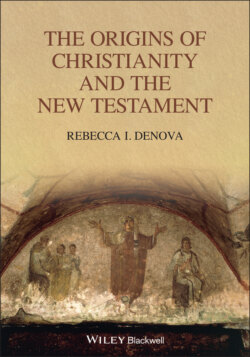Читать книгу The Origins of Christianity and the New Testament - Rebecca I. Denova - Страница 7
PREFACE
ОглавлениеThe phrase “the Quest for the Historical Jesus” has become popular through hundreds of new books. If you subscribe to cable you will find documentaries on History, Discovery, Smithsonian, and National Geographic Channels. New archaeological discoveries often make headlines (especially those in the Galilee), and “deconstructionist histories” are often designed to shock.
For many lay Christians, a new fascination with the study of Jesus is confusing. We have the gospels, the letters of Paul, and the rest of the New Testament that told the story. And these stories are re-enacted in the liturgy at Christmas and Easter. Priests and ministers are trained in Seminaries to elucidate the “meaning” of the texts, updating them for modern Christians. Why does any of this need “revision?” And what is meant by “the historical Jesus?” Is he different from the Jesus of the New Testament?
The simple answer is “yes,” if we mean that the Jesus who was an apocalyptic prophet in the first century is different from the “Christ” of the churches (divine) and eventually the second member of “The Trinity,” co-equal with God (325 ce). Centuries of later Christian Theology and traditions are constantly read back into the gospels, where they are historically out of place. For example, Jesus was not the founder of Christianity; all our evidence demonstrates that he and his early followers were not interested in starting a new religion. Jesus was not “the first Christian.”
This surprises most people. In the first century, there was no such thing as “Christianity” as a separate religious system. It was only formulated in the second century when Christian leaders known as the Church Fathers argued for a different system from Judaism. The term “Christian” (a follower of Christ) only appears a few times in Luke’s Acts of the Apostles, written toward the end of the first century. It is not his preferred term. He most often refers to believers as “followers of the way,” or “brothers” (as does Paul in his letters). Scholars of the New Testament refer to these people as “Christians” to distinguish them from other Jewish groups at the time (and it is simply convenient).
The other surprising aspect of the gospels is that they all present four different portraits of Jesus and what he was doing. We combine Matthew and Luke together under the Christmas tree although the two nativity stories are vastly different. The great Hollywood productions of the 1950s and 1960s of “Jesus” movies did the same by picking and choosing various parts of the gospels and presenting one huge epic. Most Hollywood productions preferred Luke’s Jesus, but often added John’s speeches.
As we will see, each of the four gospels has a defined historical context. As events and issues in the communities of his followers changed over time, their “story” of Jesus changed as well.
